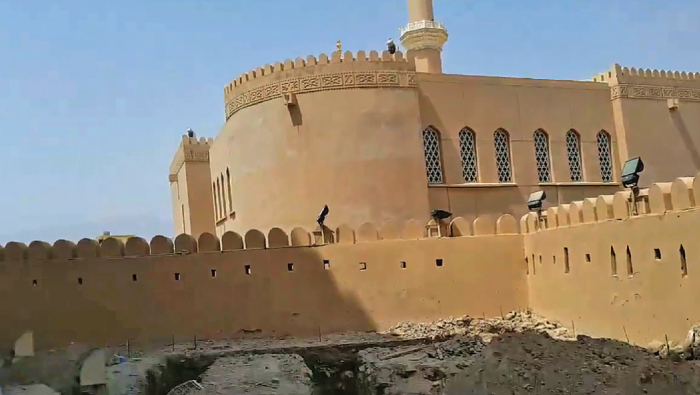
Muscat: The Ministry of Heritage and Culture has ordered a halt to construction of a new toilet block at historic Nizwa Fort.
The ministry and local authorities acted after a viral video showed the block being constructed very close to the walls of the 17th century fort.
Jamal Al Kindi, a resident of Nizwa and history buff, posted a video he shot inside the fort on social media and the Ministry of Heritage and Culture immediately responded.
Salim bin Mohammed Al Mahrouqi, Undersecretary of the Ministry of Heritage and Culture for Heritage Affairs, responded, saying: “Yes, work has been suspended immediately.”
Officials from the authorities have revealed that work was stopped at the site because it is too close to the fort proper. In the video, Jamal can be seen taking footage of the fort, showing the foundations for the new toilet block just a few feet away from the ancient walls. Nizwa Fort attracts visitors from around the world, who come to marvel at the structure’s cultural significance as well as its architecture.
According to the Ministry of Tourism: “Nizwa Fort is one of the oldest forts in Oman.” Also called ‘Al Shahbaa’, the fort is close to the traditional Nizwa souq and was built in the 17th century by then-ruler Imam Sultan bin Saif Al Ya’rubi.
The castle is 35 metres high and its foundations are as deep as the castle is high. Furthermore, it is said to have been built in 12 years, according to the Ministry of Tourism.
In the video, Jamal said: “This is all happening right under the castle. There are other places that are better for restrooms.”
Al Kindi added: “I am not only concerned with Nizwa, but with every inch of history and historical locations that we have, both in Nizwa and in Oman generally.” According to Al Kindi, he wanted to highlight that the restrooms would be better placed elsewhere.
“Some have said that there was no alternative for the restroom placement, but the video shows that there were alternatives and better spots for the restrooms.”
The landmark was built by masons from Al Dakhiliyah itself with help from artists from Nizwa, Birkat Al Mouz, Manah, and Bahla, who all worked together to build a castle with 25 watch points, each 15 metres high, 480 spots for gunmen and archers and a staircase with seven doors, each of which with a small well, as well as a spot from which hot oil could be poured down on attackers in the event of an attack.